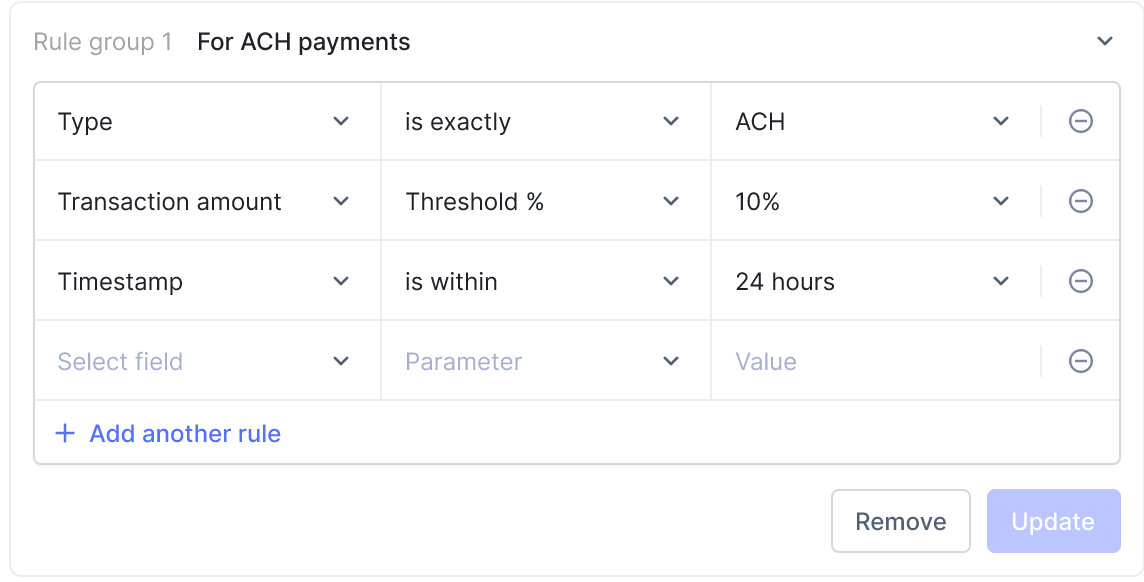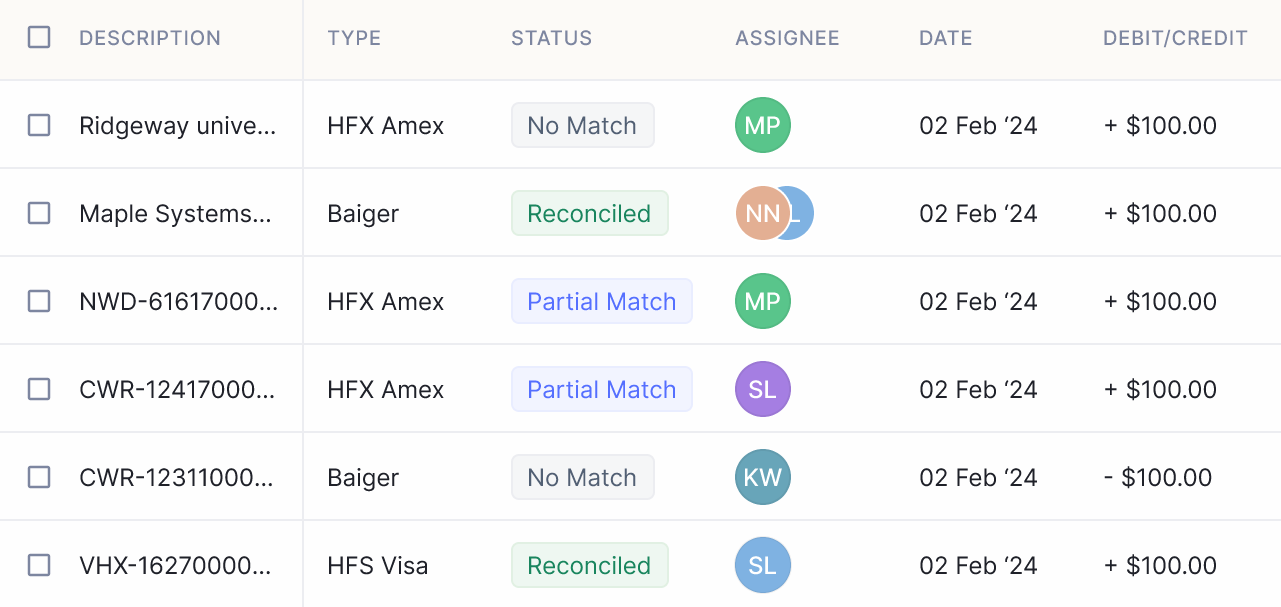
Unlocking Efficiency: A Guide to Intercompany Reconciliation Software
Modern businesses, with the predominance of remote work and globalised operations, often have to deal with intercompany transactions. Managing such transactions can be cumbersome without the right tools and solutions, however.
But intercompany reconciliation softwares are an answer to this challenge, streamlining the process and ensuring accuracy in financial reporting. In this guide, we'll explore what intercompany reconciliation is, the top softwares in the market, key features to consider before buying one, pricing options, and how automated solutions like Nanonets can revolutionise your reconciliation process.
What is Intercompany Reconciliation?
Intercompany reconciliation is the process of balancing and reconciling financial transactions between different entities or subsidiaries within the same organisation. In multinational corporations or conglomerates with multiple subsidiaries, intercompany transactions are common occurrences.
These transactions can include the transfer of goods, services, or funds between affiliated companies for various purposes, such as inventory management, shared services, or financing activities. And intercompany reconciliation ensures that all transactions between affiliated entities are accurately recorded, eliminating any discrepancies and errors in financial reporting. The intercompany reconciliation process involves comparing and matching transactions recorded by each entity to ensure consistency and accuracy in financial statements.
Key aspects of intercompany reconciliation include:
Identification of Intercompany Transactions:
The first step in the reconciliation process is identifying transactions that involve multiple entities within the organization. These transactions are typically recorded separately by each entity and need to be reconciled to ensure consistency in financial reporting.
Matching of Transactions:
Once intercompany transactions are identified, the next step is to match corresponding transactions recorded by each entity. This involves comparing transaction details, such as amounts, dates, and references, to ensure that they align across all entities involved.
Resolution of Discrepancies:
Inevitably, discrepancies may arise during the reconciliation process due to timing differences, currency conversions, or other factors. Resolving these discrepancies requires investigation and communication between the entities involved to determine the correct treatment and adjustments needed.
Documentation and Reporting:
Throughout the reconciliation process, it is essential to maintain comprehensive documentation of all transactions and reconciliation activities. This documentation serves as an audit trail and supports accurate financial reporting.
Intercompany reconciliation is a critical part of ensuring the integrity and accuracy of financial statements for multinational corporations. But given the many complicated steps involved, reconciling transactions between affiliated entities and organisations can become tedious. Fortunately, there exist softwares and solutions that help companies efficiently perform intercompany reconciliation while maintaining transparency and compliance through their financial reporting processes.
What are the features of Intercompany Reconciliation Software?
Intercompany reconciliation software is a specialised solution designed to streamline and automate the intercompany reconciliation process within organisations. This software provides tools and functionalities to facilitate the identification, matching, and resolution of intercompany transactions, thereby ensuring accuracy and consistency in financial reporting across multiple entities or subsidiaries.
Intercompany reconciliation software typically offers the following features and capabilities:
- Transaction Matching: Advanced algorithms and matching logic enable the software to automatically compare and match intercompany transactions recorded by different entities. This matching process helps identify discrepancies and inconsistencies that require further investigation.
- Automated Workflows: The software automates various aspects of the reconciliation process, including the routing of unmatched transactions to the appropriate personnel for resolution. Automated workflows streamline the reconciliation process, reduce manual effort, and improve efficiency.
- Exception Handling: Intercompany reconciliation software includes features for managing exceptions and discrepancies identified during the matching process. It allows users to categorise, prioritise, and track unresolved items, ensuring timely resolution and preventing bottlenecks in the reconciliation workflow.
- Audit Trail: Comprehensive audit trail functionality provides visibility into all reconciliation activities, from transaction matching to resolution. This audit trail helps organisations maintain compliance with regulatory requirements and provides transparency for internal and external audits.
- Reporting and Analytics: Robust reporting and analytics capabilities enable users to generate customised reports and dashboards to monitor reconciliation performance, track key metrics, and identify trends or patterns in intercompany transactions.
- Integration with ERP Systems: Intercompany reconciliation software seamlessly integrates with existing enterprise resource planning (ERP) systems, allowing for the seamless exchange of data and information. Integration ensures data consistency and accuracy across financial systems and processes.
- Scalability and Flexibility: Modern intercompany reconciliation software is scalable and flexible, capable of supporting the reconciliation needs of organisations of all sizes and complexities. It can adapt to evolving business requirements and accommodate growing transaction volumes.
By leveraging intercompany reconciliation software, organisations can streamline their reconciliation processes, improve accuracy and efficiency, and reduce the risk of errors and discrepancies in financial reporting. Intercompany reconciliation software empowers finance teams to focus on more value-added activities, while automating the repetitive parts of intercompany reconciliation.
Top Intercompany Reconciliation Softwares
Multiple reputable software providers offer intercompany reconciliation solutions, each with its own unique features and benefits, suitable to various kinds of businesses. Here are some of the top tools in this category:
- Tookitaki
- Key Features: Advanced AI-driven matching algorithms. Tookitaki's intercompany reconciliation software leverages artificial intelligence (AI) and machine learning (ML) algorithms to automate the matching and reconciliation of intercompany transactions. This technology ensures high accuracy and efficiency in identifying discrepancies and resolving unmatched items.
- Customers include financial institutions, banks, and large enterprises with complex intercompany transaction volumes. Tookitaki’s software is suitable for organisations seeking to enhance reconciliation accuracy, reduce manual effort, and mitigate risks associated with intercompany transactions.
- Pricing: Tookitaki typically offers customised pricing based on the specific needs and requirements of each organisation. Pricing may vary depending on factors such as transaction volume, user licences, and additional features.
- LucaNet
- Key Features: Integrated financial consolidation and reporting. LucaNet's intercompany reconciliation software is part of its comprehensive corporate performance management (CPM) suite, which includes financial consolidation and reporting functionalities. This integration allows organisations to manage intercompany transactions seamlessly within the broader context of financial planning, analysis, and reporting.
- Customers include medium to large enterprises across various industries, including manufacturing, retail, and services, benefit from LucaNet's integrated CPM solution. The software caters to organisations seeking to streamline intercompany reconciliation processes while gaining insights into financial performance and compliance.
- Pricing: LucaNet typically offers subscription-based pricing models tailored to the size and complexity of each organisation. Pricing tiers may vary based on factors such as user licences, data volume, and additional modules or services.
- LucaNet is a highly-rated product on G2 and Capterra, where users value it for its analytical capabilities and comprehensive CPM features.
- SoftLedger
- Key Feature: Real-time visibility and analytics. SoftLedger's intercompany reconciliation software provides real-time visibility into intercompany transactions and balances, enabling finance teams to monitor reconciliation progress and analyse transaction data effectively. The software includes customizable dashboards and reporting tools for detailed insights into intercompany financial activities.
- Customers include small to midsize businesses (SMBs) and growing enterprises looking for a user-friendly and scalable solution for intercompany reconciliation. SoftLedger caters to organisations seeking to improve reconciliation accuracy and efficiency without the complexity and overhead of traditional enterprise software.
- Pricing: SoftLedger offers transparent and competitive pricing plans designed to accommodate the budget and requirements of SMBs and growing enterprises. Pricing may include subscription-based models with tiered pricing based on features, user licences, and support options.
- SoftLedger is a highly-rated product by users on G2 and Capterra, especially valued for its timely support.
What to Look for in Intercompany Reconciliation Software
When evaluating intercompany reconciliation software, consider your organization's specific needs and requirements. Depending on the size of your business and its specific financial reporting needs, there may be multiple eligible tools.
A few common features to look for in Intercompany Reconciliation Software, however, are:
- Scalability: Ensure the software can accommodate your organisation's growth and evolving needs. Look for solutions that can handle increasing transaction volumes and support multiple entities or subsidiaries as your business expands.
- Integration: Seamless integration with existing systems and software is crucial for maintaining data consistency and accuracy. Choose a reconciliation tool that can integrate with your ERP (Enterprise Resource Planning) system, accounting software, and other financial applications to streamline data transfer and minimize manual data entry.
- Customization: The ability to customise workflows and reports is essential for tailoring the reconciliation process to match your organisation's unique requirements. Look for software that offers flexible configuration options, allowing you to define custom rules, templates, and approval workflows based on your specific business processes.
- Support and Training: Access to comprehensive support and training resources is vital to maximise the software's effectiveness. Choose a vendor that provides ongoing technical support, training sessions, and user documentation to help your team quickly learn the system and address any issues or questions that may arise during implementation and use.
How Nanonets can Automate Intercompany Reconciliation
Advanced automation technologies like Nanonets leverage artificial intelligence (AI) and machine learning (ML) to streamline the reconciliation process. Here's how:
Automatic Transaction Matching: Nanonets’ Optical Character Recognition (OCR) technology can automatically match intercompany transactions based on predefined criteria, such as transaction amounts, dates, and reference numbers. This eliminates the need for manual matching and reduces the risk of errors or discrepancies.
Discrepancy Detection: Nanonets’ AI algorithms can detect discrepancies or anomalies in intercompany transactions, such as missing or mismatched data, duplicate entries, or unauthorised transactions. By flagging these discrepancies early on, the software enables finance teams to investigate and resolve issues promptly, ensuring accurate financial reporting.

Efficient Reporting and Analytics: Nanonets’ automation features generate detailed reports and analytics based on intercompany transactions, providing valuable insights into financial performance, cash flow, and compliance. These reports can help finance teams identify trends, track KPIs (Key Performance Indicators), and make informed business decisions based on real-time data.

Time and Cost Savings: By automating repetitive reconciliation tasks, such as data entry, matching, and reporting, AI-powered tools can save valuable time and resources for finance teams. This allows finance professionals to focus on higher-value activities, such as financial analysis, strategic planning, and decision-making, driving greater efficiency and productivity across the organisation.

In this manner, Nanonets can greatly improve the organisation’s intercompany reconciliation software.
Conclusion
Intercompany reconciliation is the process of balancing and reconciling financial transactions between different entities and subsidiaries of the same organisation. Intercompany reconciliation software plays a vital role in ensuring financial accuracy and transparency through this process, especially for businesses with complex structures and intercompany transactions.
By leveraging advanced technology and automation tools like Nanonets, businesses can streamline the reconciliation process, improve accuracy, and achieve greater financial transparency. Through this guide, we explored the key features and considerations for selecting the right intercompany reconciliation software, as well as the benefits of multiple top-of-the-market automated solutions, including Nanonets. From scalability and integration to customization and support, it's essential to choose an intercompany reconciliation software that aligns with your organisation's specific needs and requirements.



